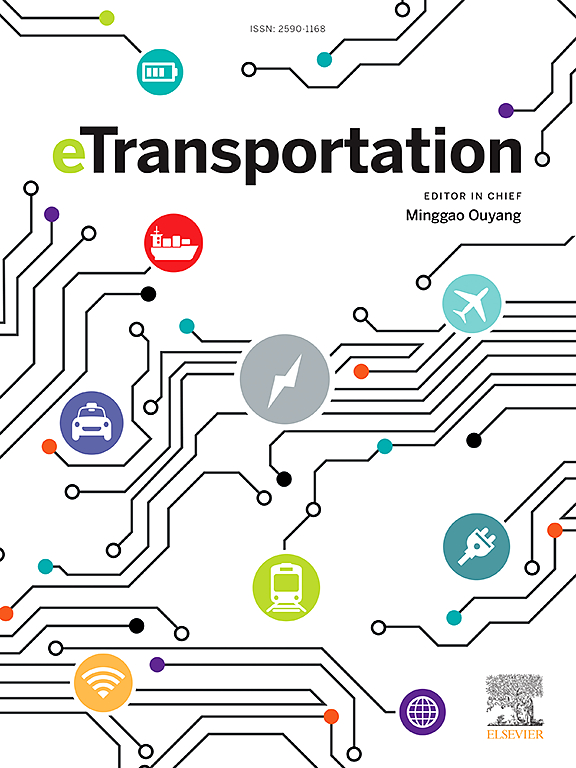A novel aging modeling approach for second-life lithium-ion batteries
IF 17
1区 工程技术
Q1 ENERGY & FUELS
引用次数: 0
Abstract
The electric mobility industry is booming. In order to reduce the environmental impact of this boom, there is the potential to reuse the batteries from electric vehicles. However, the technical and economic feasibility of the second-life of lithium-ion batteries remains in question. This is due to the intricate non-linear mechanisms that occur during battery degradation, leading to capacity and power loss. Ongoing research aims to create models that can predict the state of battery degradation. However, most studies have focused on the battery’s first life, operating within a limited state of health range and requiring constant monitoring of the battery’s exposure conditions. While these models provide satisfactory results for the battery’s performance in vehicles, they cannot be directly applied to second-life scenarios. In response to this issue, this article proposes a degradation modeling method for second-life batteries based on identifying and linearizing different degradation trends within the battery. This approach allows the application of the model without prior knowledge of the battery’s history. It has been validated for a state of health range of 95% to 20%, through both conventional charge-discharge tests and a real-world scenario involving a smart charging station for urban buses. The results obtained with the developed model are overall satisfactory, achieving a MAPE below 3% for capacity and 1.4% for internal resistance in the real-world scenario.
一种新的二次寿命锂离子电池老化建模方法
电动汽车行业正在蓬勃发展。为了减少这种繁荣对环境的影响,有可能重新使用电动汽车的电池。然而,锂离子电池二次寿命的技术和经济可行性仍然存在问题。这是由于在电池退化过程中发生的复杂的非线性机制,导致容量和功率损失。正在进行的研究旨在建立能够预测电池退化状态的模型。然而,大多数研究都集中在电池的第一寿命上,在有限的健康范围内运行,并且需要不断监测电池的暴露条件。虽然这些模型对电池在车辆中的性能提供了令人满意的结果,但它们不能直接应用于二次使用场景。针对这一问题,本文提出了一种基于识别和线性化电池内部不同退化趋势的二次寿命电池退化建模方法。这种方法允许在不事先了解电池历史的情况下应用模型。通过传统的充放电测试和涉及城市公交车智能充电站的现实场景,它的健康状态范围已被验证为95%至20%。利用所开发的模型获得的结果总体上令人满意,在实际场景中,容量的MAPE低于3%,内阻的MAPE低于1.4%。
本文章由计算机程序翻译,如有差异,请以英文原文为准。
求助全文
约1分钟内获得全文
求助全文
来源期刊

Etransportation
Engineering-Automotive Engineering
CiteScore
19.80
自引率
12.60%
发文量
57
审稿时长
39 days
期刊介绍:
eTransportation is a scholarly journal that aims to advance knowledge in the field of electric transportation. It focuses on all modes of transportation that utilize electricity as their primary source of energy, including electric vehicles, trains, ships, and aircraft. The journal covers all stages of research, development, and testing of new technologies, systems, and devices related to electrical transportation.
The journal welcomes the use of simulation and analysis tools at the system, transport, or device level. Its primary emphasis is on the study of the electrical and electronic aspects of transportation systems. However, it also considers research on mechanical parts or subsystems of vehicles if there is a clear interaction with electrical or electronic equipment.
Please note that this journal excludes other aspects such as sociological, political, regulatory, or environmental factors from its scope.
 求助内容:
求助内容: 应助结果提醒方式:
应助结果提醒方式:


